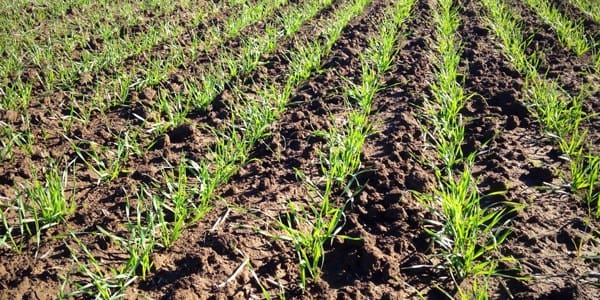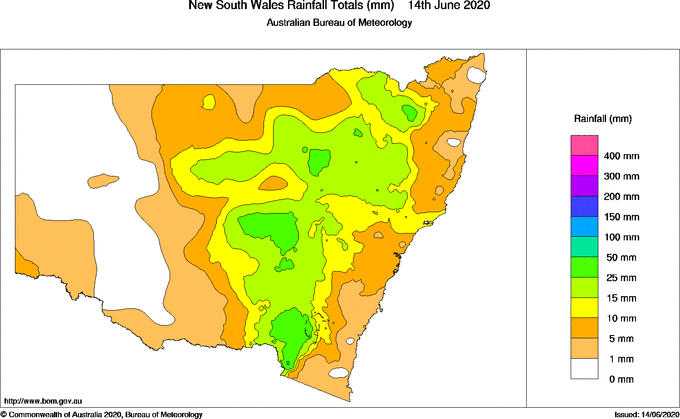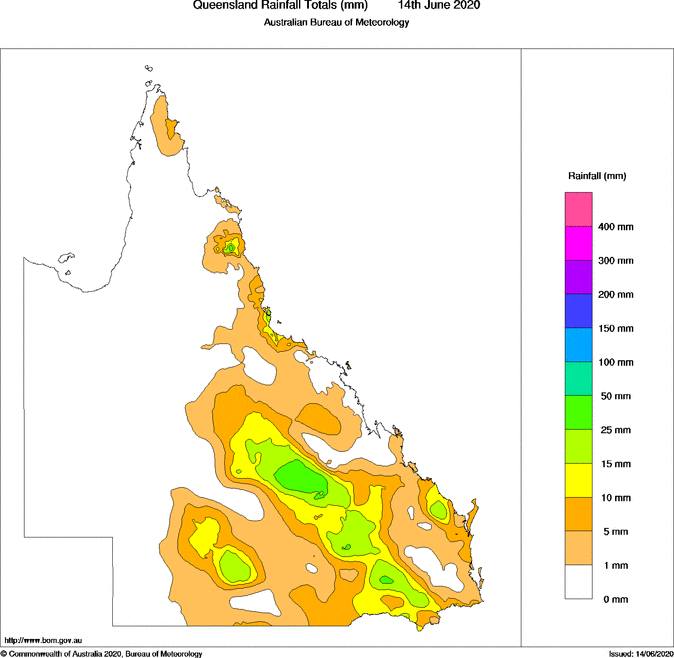AUSTRALIA’s drought-weary eastern cropping areas are back in the game this year with a turnaround in the season that has prompted widespread winter crop plantings and raised the potential for above average yields.
Timely rains across the south eastern and northern cropping zones in the past few months have given many farmers the opportunity to return to full winter sowing programs following a long-running drought that stifled crop production over the past few years.
 ABARES estimates the improved seasonal conditions will see the area planted to winter crops nationally increase by 23 per cent this winter, with increases of over 90pc in New South Wales and Queensland which were hardest hit by drought in recent years.
ABARES estimates the improved seasonal conditions will see the area planted to winter crops nationally increase by 23 per cent this winter, with increases of over 90pc in New South Wales and Queensland which were hardest hit by drought in recent years.
Highlighting the turnaround in the east, NSW winter crop production in 2020-21 is estimated to rise to around 12 million tonnes (Mt). In the previous two drought-affected years the state produced only 3.2Mt and 3.3Mt respectively.
Queensland this season is expected to produce around 2Mt of winter crop, up significantly from the past two seasons when only 686,000t and 678,000t were produced.
ABARES forecasts winter crop production across Australia will increase by 53pc in 2020–21 to 44.5Mt, which is 11pc above the 10-year average to 2019–20.
Yield prospects in NSW, Victoria and South Australia, in particular, are forecast to be above average given favourable levels of subsoil moisture at the beginning of June and the likelihood of above average rainfall in July.
NSW winter crop on a roll
In north west NSW, B&W Rural Moree principal, Peter Birch, said growers had largely completed their sowing programs and the crops were up and away under mild conditions and timely rains.
“It sounds silly, but some crops are travelling too well. We haven’t had a frost yet and, even though there hasn’t been a heap of rain, little falls every 10 days or so are really cranking things along,” he said.
“It is only getting down to 5 or 6 degrees overnight and the crops are absolutely cranking along. That means anything on a really good profile (of moisture) has good potential; it means anything that is not on a good profile will run out of moisture pretty quickly.
“Most people held back on chickpeas. A lot of chickpeas are just coming out of the ground now and are looking good. They will be getting their first fungicide shortly.”
Mr Birch said a rain front that brought five to 30 millimetres to much of the region over the past weekend had kicked crops along.
He said south east of Moree received 5mm to 10mm; a strip from Walgett through to Narrabri had 15mm to 20mm; there was a light strip through the Watercourse and a heavier strip through Mungindi and Garah; but falls were very patchy around Goondiwindi.
“Everything is sown. There would be a few blocks east of North Star that didn’t go in or went in dry, but everywhere in the Moree-Mungindi-Narrabri area is all in,” he said.
“There is very little country left out for summer crop. People have just said they have to make some money and it will be too risky waiting for summer. There will be only a small sorghum and cotton plant.”

Figure 1: Rain fell across much of NSW’s cropping zone last Sunday, June 14.
In Central West NSW, IMAC Consulting agronomist/director at Forbes, Cameron Corke, said there had been falls of 15mm to 30mm throughout the region last weekend and crops were travelling well.
“Most of the crop is in. There is a little bit of pasture still to go in and a little bit of late barley, but the bulk of it is in,” he said.
“There is a reduction in barley plantings given the situation (with China imposing tariffs) and a bit more wheat has gone in. There is a swing back to canola, but not an excessive swing. There is a significant acreage of chickpeas, and a few field peas.”
Mr Corke said conditions had been ideal for farmers to get on top of their weed control programs.
“The pre-ems have worked reasonably well. We are just waiting to see if there are any late broadleaves coming through. The focus now is getting nitrogen out on the early crops,” he said.
Mr Corke said the only thing that was concerning him now was how advanced some of crops were under the mild conditions.
“They are moving along because we are not getting a run of frosts to slow them down. They are hitting jointing now which you don’t normally hit until July,” he said.
Mr Corke said early-planted crops had advanced so quickly some producers had cut them for fodder, then locked them up again for a second cut or grain crop.
The opportunities for grazing them were limited as “there just aren’t enough livestock around to pull things up”.

Queensland plays catch-up
It has been a tougher time in Queensland where, despite heavy falls in late January-early February, there has been little rain since.
While light falls last weekend will trigger another round of sowing in some areas, there is still a significant portion of the winter crop to go in in many areas.
On the Darling Downs, Dalby Rural Supplies head agronomist, Andrew Johnston, said the patchy rain last weekend saw some areas receive only around 10mm, while others had between 20mm and 25mm.
“There was a little bit of crop went in early on a change a couple of weeks ago where some guys picked up 20mm to 25mm that was enough for a few to take a punt and plant. That’s all up and looking great. This rain (last weekend) on top of it certainly is going to give it a very good start,” he said.
“A lot of guys did quite a bit of dry planting. Even the guys who got 15-20mm, that will get the crops up and established.
“By the end of the week there will be a few planters getting going. In our business, we are getting a lot of growers ringing up and ordering wheat, barley and chickpeas. There will be a substantial plant.”

Figure 2: Falls were patchy across Queensland’s cropping areas last Sunday, June 14.
In Central Queensland, Spackman Iker Ag Consulting director, Graham Spackman, Emerald, said most districts in CQ only had between 10mm and 20mm last weekend, but there were some more significant falls in the Springsure-Rolleston area where registrations were up around 40mm to 50mm and more.
“There is quite a lot of chickpea in. It is mostly up and away and looking okay,” he said.
“Wheat is a different story. A lot of the wheat went in in fairly tough conditions. It was warm early on so a lot of the wheat establishment has been poor. We are disappointed in how the wheat has gone this year. There are some decent crops about but a lot of them are pretty ordinary.
“The wheat crops are better up in the Clermont area, but in the middle part of the Highlands establishment is poor.”
Mr Spackman said there were still a few paddocks throughout the area that hadn’t been planted.
“The subsoil moisture is either not good enough or the surface moisture hasn’t met up enough for people to plant at this stage. There is a bit more going in on the weekend rain, but only where they got the really good falls,” he said.

Grain Central: Get our free daily cropping news straight to your inbox – Click here

HAVE YOUR SAY